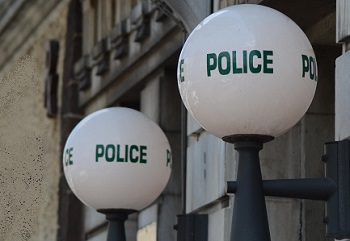This new smartphone application has been launched in Delhi and the Union Home Minister was present.
A new mobile app called “Himmat” has been developed for and launched by the Delhi Police in India, in order to provide women with a tool that will allow them to make a very quick and easy distress call to appropriate parties so that they can receive the help that they need.
The mobile application lets them reach the Police Control Room and their relatives in an emergency situation.
Union Home Minister Rajnath Singh was present in New Delhi, when the mobile app was first launched by the police. Its primary market is employed women who are smartphone owners and who find themselves traveling alone – even late at night – as a result of their working hours. At the same time that the mobile application was launched, Singh also handed out pepper spray to the women who were present and gave awards to girls who had gone through the Delhi Police self-defense program and had successfully completed it.
The Delhi Police received Sing’s praise for the use of technology and the mobile app for improved policing.
 Delhi Police Commissioner BS Bassi was also present for the launch of the Himmat app for mobile devices, and explained that the process involves downloading the application by registering with the Delhi Police website. Registration involves sharing the smartphone user’s name and number, as well as the contact information of at least two friends or relatives who could be contacted in case of an emergency.
Delhi Police Commissioner BS Bassi was also present for the launch of the Himmat app for mobile devices, and explained that the process involves downloading the application by registering with the Delhi Police website. Registration involves sharing the smartphone user’s name and number, as well as the contact information of at least two friends or relatives who could be contacted in case of an emergency.
Upon the completion of the registration, the smartphone user receives a text message with a download link and a registration key. When installing the smartphone app, the registration key needs to be entered, but that is a one-time occurrence.
After that point, the smartphone user opens the mobile app while traveling alone, and can send an alert to the police or to his or her emergency contacts simply by shaking the device or by pressing on the power button/soft button. Immediately after the distress alert has been triggered, a thirty second audio/video recording will begin on the device and that will be relayed to the Police Control Room (PCR). Bassi explained that once that message is sent to the PCR, they will receive a call back to check on them.

 According to Simon Khalaf, the CEO of Flurry, these changes suggest that the mobile browser is only one of a large number of other applications on a mobile device. He explained that a browser on a smartphone is “a single application swimming in a sea of apps.” The data that Flurry gathered in order to make this conclusion was from its network that represents more than 450,000 smartphone applications. Those apps are installed on more than 1.3 billion devices located around the globe.
According to Simon Khalaf, the CEO of Flurry, these changes suggest that the mobile browser is only one of a large number of other applications on a mobile device. He explained that a browser on a smartphone is “a single application swimming in a sea of apps.” The data that Flurry gathered in order to make this conclusion was from its network that represents more than 450,000 smartphone applications. Those apps are installed on more than 1.3 billion devices located around the globe.